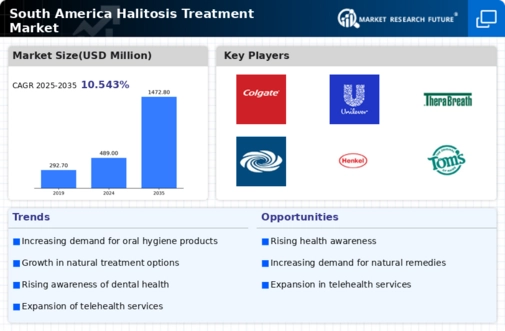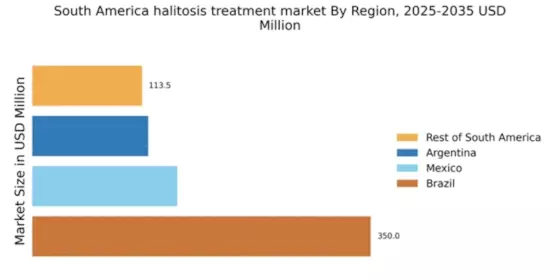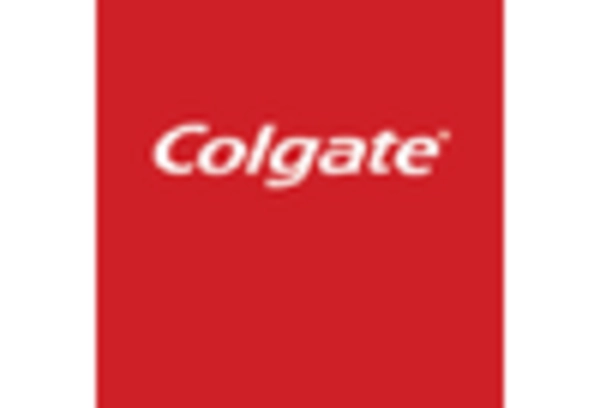Expansion of Dental Care Services
The expansion of dental care services across South America is likely to bolster the halitosis treatment market. With an increasing number of dental clinics and practitioners, access to professional oral health care is improving. This growth in dental services facilitates better diagnosis and treatment of halitosis, as patients are more likely to consult professionals for their oral health concerns. Furthermore, the integration of halitosis treatments into routine dental check-ups may enhance consumer confidence in seeking solutions. The halitosis treatment market stands to gain from this expansion, as more individuals are encouraged to address their oral health proactively.
Influence of Social Media and Marketing
The influence of social media and targeted marketing strategies is becoming a crucial driver for the halitosis treatment market in South America. Brands are leveraging social media platforms to educate consumers about halitosis and promote their products. This digital engagement appears to resonate with younger demographics, who are more likely to seek solutions for bad breath. As awareness spreads through social channels, consumers are encouraged to explore various treatment options. The halitosis treatment market may experience growth as brands effectively utilize these platforms to reach potential customers and address their concerns regarding oral health.
Rising Demand for Oral Hygiene Products
The demand for oral hygiene products in South America is on the rise, which could positively impact the halitosis treatment market. Consumers are increasingly investing in products that promise fresh breath and improved oral health. This trend is reflected in the growth of the oral care segment, which has seen a surge in sales of mouthwashes, breath fresheners, and specialized toothpaste. According to market data, the oral care segment is projected to grow by approximately 5% annually. As consumers become more health-conscious, the halitosis treatment market is likely to benefit from this heightened interest in oral hygiene products.
Cultural Shifts Towards Personal Grooming
Cultural shifts in South America towards enhanced personal grooming and hygiene practices are likely influencing the halitosis treatment market. As societal norms evolve, there is a growing emphasis on personal appearance and health, which includes maintaining fresh breath. This cultural change is prompting consumers to invest in products that promote oral freshness. The halitosis treatment market is positioned to capitalize on this trend, as individuals increasingly prioritize their grooming routines and seek effective solutions for bad breath. This shift may lead to a broader acceptance of halitosis treatments as essential components of personal care.
Increasing Prevalence of Oral Health Issues
The rising incidence of oral health problems in South America appears to be a significant driver for the halitosis treatment market. Studies indicate that approximately 30% of the population experiences some form of halitosis, which is often linked to underlying dental issues. This growing awareness of oral health correlates with an increased demand for effective treatments. As consumers become more informed about the connection between oral hygiene and overall health, they are likely to seek solutions for halitosis. The halitosis treatment market is thus positioned to benefit from this trend, as individuals prioritize their dental care and seek products that address bad breath effectively.


















Leave a Comment